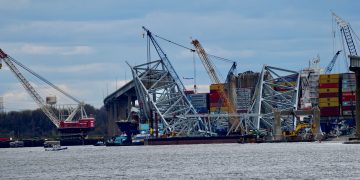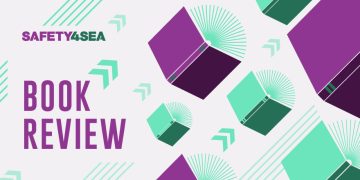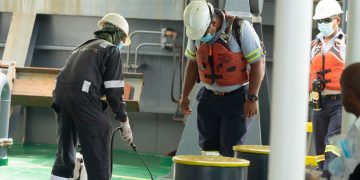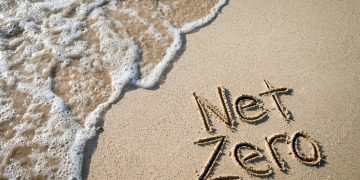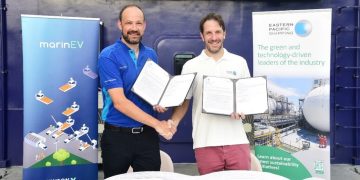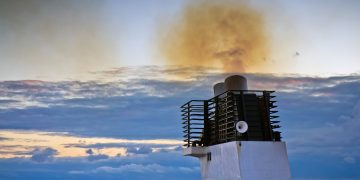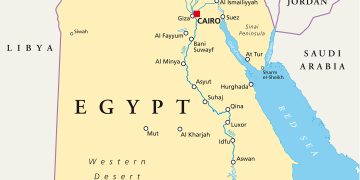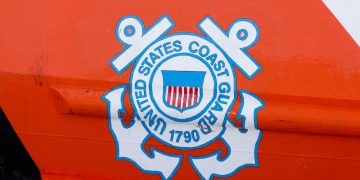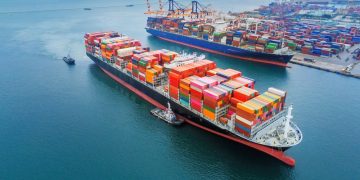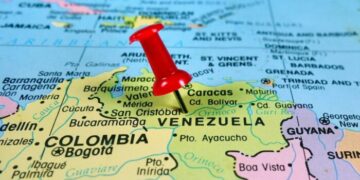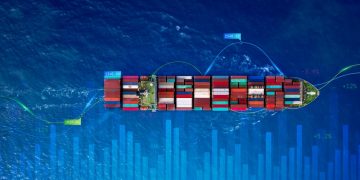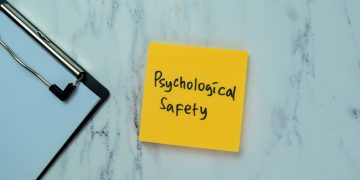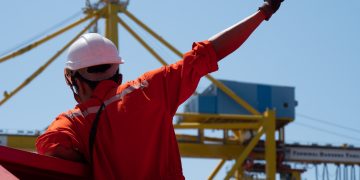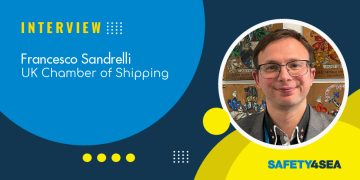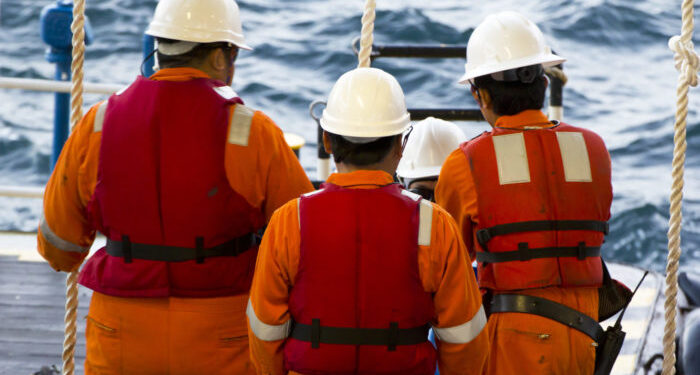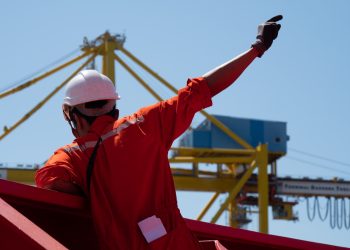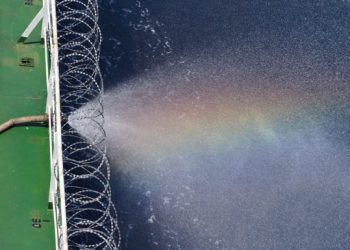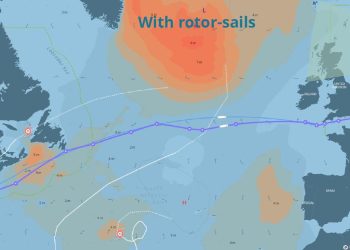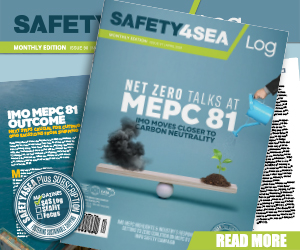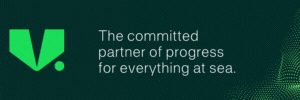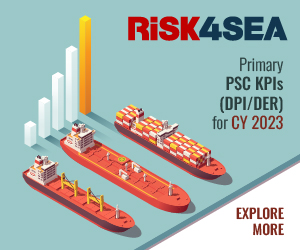During the first SAFETY4SEA Forum in Manila, Mr. Patrick H. Maxwell, Vice President, MAGSAYSAY, noted that the shipping industry of today has to deal with major manpower shortages both at sea and ashore, as a result of the economic and demographic changes that have led to aging populations. In this regard, he shared key challenges shipping must address in order to attract new generations to select a career in shipping as a top choice: Connectivity, shore leave, criminalization and piracy are among the key challenges, he stressed.
The shipping industry has endured seafarer shortages over several decades since the 1980’s when developed shipping economies experienced demographic changes. Their officers and crew were aging, birthrates were dwindling, and economies were growing.
So a parent with one or two children did not encourage his or her child to pursue a career at sea especially with diverse employment choices at home. This was the opportunity given to developing economies like the Philippines to build the infrastructure to attract, educate, and train young people for a life at sea. This opportunity to serve on the world’s fleet was made possible by two developments:
The first was the white-list developed by the IMO and the MLC governance structure – The IMO certification and training governance and the ILO’s Maritime Labor Convention frameworks created the global standards that allowed any young person from a member state to work as a seafarer in other flag states.
[smlsubform prepend=”GET THE SAFETY4SEA IN YOUR INBOX!” showname=false emailtxt=”” emailholder=”Enter your email address” showsubmit=true submittxt=”Submit” jsthanks=false thankyou=”Thank you for subscribing to our mailing list”]
Then there was the creation of the second registry structure that allowed seafarers from a white-list country to work in other developed country registries.
These developments created the governance structure that gave seafarers the opportunity to become truly global workers. This ability to draw from a global pool of talent does not exist in any other industry sector – so we can be proud that the shipping industry – with global insurances, global travel, global seaman’s books and globally accredited certificates – is a model that makes circular-non immigration labor mobility work.
Notwithstanding this well-developed global infrastructure, major shortages still exist within the industry. The labor shortage of officers, especially for specialized vessels, has been a major focus of many owners and manning companies like Magsaysay, that are investing in training and upgrading to bring junior officers up to assume senior positions.
But Guess what! Not only shipping but land-based employers around the world are facing the most acute talent shortage since 2006 because of demographic changes that have led to aging populations.
The Manpower Group 2018 Shortage Survey showed that 45% of almost 40,000 employers across 43 countries struggled to fill roles especially in skilled trades with Japan facing critical shortages in all trade sectors.
The shipping industry has been protected from this labor shortage crisis since it had established a global labor governance structure early on that allowed any nationality to work at sea. But now, as countries such as Japan and Germany open up their foreign workers programs and develop their own immigration solutions, the shipping industry will be faced with competition!
Thus, the war on talent will become increasingly severe as more economies respond to mitigate this potential human capital and economic crisis with varying approaches from immigration to non-immigration temporary work solutions, giving young people a wider range of global career opportunities outside of the shipping industry.
So how do we attract a young person to select a career in shipping as a top choice?
Challenge # 1: Addressing some of the unattractive aspects of the job
Connectivity: We need to provide the environment that young people (for that matter everyone) have become used to. Yes… more and more shipowners are providing free internet access at sea but satellite costs make live streaming prohibitive.
One solution is for ports to offer modems to be placed in the crew mess so crew can live-stream and video chat for free.
Shore leave and seeing the world: One of the attractions for young people is to have a career that allows one to see the world. More stringent shore leaves, faster turnaround times of vessels, as well as increased security measures, make it harder for seafarers to disembark.
Potential Criminalization: Potential criminalization is a frightening disincentive. Seafarers who are involved in an accident can be treated as criminals and tried and jailed in countries with a different legal system and in a foreign language.
Maritime Piracy: Piracy attacks are covered by mainstream media and can have a huge impact on young people’s decision to pursue a career in shipping.
International shipping associations need to more forcefully ensure that the industry voice is heard as far as security and shore leaves, criminalization, and piracy are concerned.
Work and Family Balance: We all hire and manage the workforce with the assumption that someone is taking care of the family at home. The reality is that seafarers (including myself with a four-month baby) experience varying levels of anxiety over the well-being of their spouses, children and elderly family members, and feel guilt when they are absent from home.
Magsaysay, together with the Philippine Business Coalition for Women Empowerment (PBCWE) is developing a Management Program that aims to inspire a new form of leadership for the home and family, which we hope that everyone will work on with us.
The Management Program will involve the training and development of family leaders and children to create a high performing family unit. The proposed curriculum includes Training Modules that will be offered by the company, and/or be available online.
These include how to develop a family vision and mission, how to build the family team, a task that is often more difficult than building teams at work, as well as budgeting, financial planning, investment, etc.
Challenge # 2 Diversity: Bringing More Women into the Talent Pool
A way to address the issue of shortage of new talent in the maritime industry is by increasing diversity.
Embracing Gender Diversity: The ITF estimates that today only 2% of seafarers around the world are women. Studies have shown that diverse groups of people on board ships improve efficiency, teamwork and overall decision making.
Solution: The major challenge in attracting women to the industry, is work/life balance. One idea is to develop women cadets with the vision to become land based ship management personnel or technical marine superintendents once they reach the master and CE positions in their early 30’s when they begin to start a family. Women can be a solution to the shortages in ship management companies.
Challenge # 3: Building the capacity of existing crew to learn the new digital environment
Since ships and equipment are quickly becoming digital, there is a need to hand-hold the crew with upgrading training programs so that they welcome the digitalized future, including initiatives being taken by ship owners to introduce green ship technologies.
Challenge # 4: The long term threat of the automated ship
“Rolls-Royce Marine successfully tested the world’s first fully autonomous ferry on December 3, 2018 and will be delivering the world’s first autonomous container ship by 2020. They say that all indications are pointing towards the actualization of the autonomous shipping technology, at the latest by 2030.”
The idea that the Maritime Autonomous Surface Ship (MASS) will have the technology to reduce daily operating cost, improve turnaround time and security, and eliminate human errors, makes this option for the future of ships an attractive one.
Although the transition will be gradual, will the automated ship eliminate the jobs of over 1.5 million seafarers and affect the future of their families? How do we attract young people into maritime academies when they don’t know what the future of work will be?
One solution is to remove the Fear of the unknown by painting a clear vision of the future.
Paint a clear vision of the future: Ship-owners, engine manufacturers and research universities need to urgently gather to clearly paint and describe what the potential future of work will be in shipping. We often hear that seafaring will be converted into land-based jobs, with teams navigating ships through remote control command centers. Imagine that! If this is the future, what will maintenance crew look like and what do they need to know?
Develop the curriculum and the teachers: The Maritime Safety Committee of the IMO is working to re-organize their curriculums to centered around maritime information communications technology (ICT). But there is a lot of work that needs to be done in order for maritime academies to be ready.
Rather than looking at automation as a threat, we should look at it as an opportunity. It will be the game changer that will attract the younger generations to shipping and will help us win the war on talent. That is why it is so important that we inspire the young with an exciting new future.
A Mckinsey report titled “Jobs lost, Job Gained”, concludes that “although technology adoption can and often does cause significant short-term labor displacement, history shows that, in the long run, it creates a multitude of new jobs…offsetting the number of jobs it destroys….as well as create new types of occupations that may not have existed before…”
Technological advancements in the shipping industry, will create new jobs as well as change existing ones, making them more attractive to the younger generations.
The need to know what the future of work looks like is urgent. Remember, those who are deciding on their future today will be 30 years old in 2030 when automated ships will become a reality.
Challenge #5: Attracting Generation Z to the Exciting World of Shipping:
Generation Z are young people born in the 90s and are the next wave of talent that we need to attract into the shipping industry.
If indeed the future of work in shipping will drastically change, with ships crew sitting in command centers, maintenance crew doing planned maintenance while the ship is at port like they do on airplanes at airports, navigational crew boarding the ship before entering a congested port, this future would address all the challenges listed above. Instead, Gen Z, who are intelligent, tech savy individuals who believe technology is the future would find shipping to be the perfect career!
They like having choices so being able to work in command centers anywhere in the world would be exciting, maybe even more exciting than other tech jobs.
They like to co-create the future and with the industry in transition, would welcome the opportunity to be contributors to and pioneers in its development.
They are environmentally conscious, and would find being part of the green ships initiatives meaningful.
They like purpose – and what other industry serves humanity like shipping does?
Above article is an edited version of Mr. Maxwell’s presentation during 2019 SAFETY4SEA Manila Forum
View his presentation herebelow
The views presented hereabove are only those of the author and not necessarily those of SAFETY4SEA and are for information sharing and discussion purposes only.

Patrick Maxwell, Vice President, MAGSAYSAY
Patrick Maxwell is the Vice President of the Magsaysay People Resources Group with responsibility over strategic planning, business development and shared services. Magsaysay People Resources is involved in offering maritime, cruise and other sectors talent solutions as well as training, development and education. Prior to joining Magsaysay, Patrick worked in Seacor Holdings in New York and Hong Kong. He returned to the Philippines, his hometown, to head the newly formed Magsaysay-Seacor joint venture spearheading its first acquisition, Omni Aviation, a flight training school. Patrick has a Master’s degree from the IESE Business School in Barcelona, Spain and a Bachelor’s degree from the University of British Columbia.







